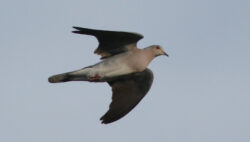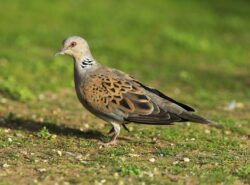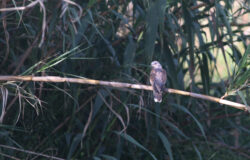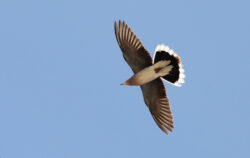No other bird brings to mind the spring migration than the European Turtle-dove (Gamiema in Maltese). It personifies the struggle of the species to return to Europe to breed from its wintering grounds in the Sahel region, south of the Sahara, travelling across huge swathes of the desert and the expanses of open seas to return to its breeding sites from southern England to eastern Russia. It also awakens the passionate side of hunters, who for years have seen it as a given right to hunt it in spring in Malta.

Yet the numbers of turtle-doves have been falling for the last 50 or so years. The population has crashed by 95% in England, and a further 75% across Europe. Much can be said on why this once iconic species has now become so scarce.
The agricultural practices of today’s farming turning farms to food factories, without leaving the richness of weeds perhaps, the use of pesticides, the destruction of huge areas of hedges all have been of a negative impact on the species.
Perhaps the huge numbers of doves killed by hunters in southern Europe has a lot to do with it also. Where are the days when up to the mid-70s in April, with southeasterly winds, one could see huge passages of hundreds and thousands of birds flying overhead? Talking to people in their 80s and 90s they recollect days when hundreds were taken by guns and nets.
Even birdwatchers in England where the species was never hunted recount that the numbers were so large that they never even bothered to count the birds as it was so common. In Sicily they used to see huge flocks migrating through and even some placenames such as Marsamemi (from Arabic meaning the port of doves) still attain to those numbers.

Following last year’s success with the autumn migration campaign, this year BirdLife Malta has launched its second #onthemove campaign to showcase the beauty of the bird migration spectacle, this time in spring. The campaign aims to inspire people to enjoy, care and protect Malta’s birds during the spring migration. Visit https://birdlifemalta.org/onthemove to learn more about the campaign.
Today, unfortunately, the sight of a turtle-dove in England has become so scarce that one needs to report it to a rarities board just to verify its presence in many counties.
In Malta the numbers, like everywhere else, have fallen considerably, but yet there are still pressures on the species to be allowed to be hunted in spring, besides autumn. Today we have come to a point that the bird has been put on the vulnerable list and is not allowed to be hunted in spring any more.

Yet what has happened in the last few years has not helped the conservation of the species. A derogation for the taking of turtle-doves was halted due to the precocious state of the species but yet a derogation to open a season for Common Quail during the peak period of turtle-dove migration has been brought forward by the ORNIS Committee from early April to the middle up to the end of the month, the time when turtle-doves are migrating through in always declining numbers. How can we be serious about helping this species in arriving in Europe to breed when we are helping illegal hunting to put pressure on the species?
Unfortunately it seems that votes always come before common sense. Some people may state that only a fraction of turtle-doves migrate over Malta. That might be true but through satellite-tracking it has been discovered that the birds migrating through Malta are part of the crucial Italian breeding population. Every shot bird means one less to breed which could help in the recovery of the species. It should be on everyone’s agenda, hunters included, that without our help the species will soon disappear.
One has only to remind oneself that 100 years ago the most abundant dove in North America, the Passenger Pigeon, was targeted in the same way as the turtle-dove. It was so common that the skies were blacked out by the flocks. Even the name clay pigeon was derived from the use of the bird as target practice (which were replaced by clay targets in later years). The birds were killed in unsustainable numbers until it became so rare that no one could find one male pigeon to breed with the last female of the species, which died in Cincinatti Zoo in 1914, even with a reward of $1,000 being offered.
Today a lot is being done to try to help the turtle-dove to recover throughout Europe. Operation Turtle-dove in England is trying to restore farmland to be more attractive for the birds. The European Union is stepping up court action against member states such as Spain and France to put stricter quotas on the species in autumn and of course Malta is once again on the watch list regarding the so-called spring derogation for quail which coincides with the main European Turtle-dove migration.
April and May are the best months to look out for this beautiful and delightful species with its low cooing call, the epitome of the magical spring season!
By Ray Vella, Former BirdLife Malta Nature Reserve Warden


